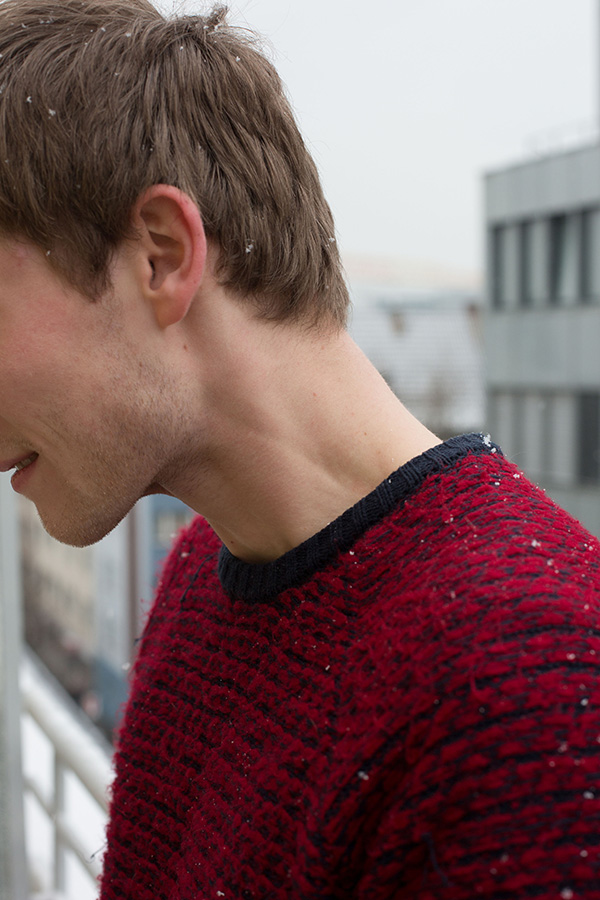How Soon Is Now?
How Soon Is Now?

Wolfgang Tillmans, Central Nervous System, 2013
© the artist
Wolfgang Tillmans: 2017, which opened last month at London’s Tate Modern, is a genuinely overwhelming and immersive experience. Incorporating works made between 2003 and 2017, the show spreads ivy-like across the walls and vitrines of fourteen of the museum’s immense galleries, charting Tillmans’s wide-eyed engagement with new forms of technology (photographic and otherwise), artistic practice, geopolitics, notions of “truth,” community, media, migration, and more. Tillmans insists that the exhibition is in no way a retrospective, but is instead a new and complex artwork in itself. “I spend all of my days thinking about these objects,” he explained at the press preview in February, “and making this show reminded me that art is at the center of what I do; it’s about the Now.”

Wolfgang Tillmans, Juan Pablo & Karl, Chingaza, 2012
© the artist
Throughout the exhibition—in the “Playback Room,” for example, where various bands’ studio recordings can be absorbed at their highest fidelity, or in Instrument (2015), a video and sound piece that converts Tillmans’s rhythmic footsteps into a throbbing soundtrack—music and photography are aligned and celebrated. The exhibition itself functions as a brilliant visual album, with each gallery serving as a distinct “track” with a particular mood, tempo, or theme. And like an accomplished musician, Tillmans is careful to avoid being too literal or pedantic. “I don’t expect anybody to understand this exhibition,” he remarked. “It’s about resonances, and the connections between us.”
Such connections have long been at the foundation of Tillmans’s work, and were foregrounded in his 2003 Tate Britain exhibition called If one thing matters, everything matters. As both that title and his signature installation strategy (constellations of prints of various scales and mediums, hung at different heights and by multiple means, from traditional frames to bulldog clips) suggest, he is not particularly concerned with the power of any individual image, but rather with the relationships between and collective effect of groupings of observations and encounters as captured through photography.

Wolfgang Tillmans: 2017, installation at Tate Modern, London
Courtesy Tate Photography
The first two galleries at Tate Modern meditate on new forms of digital image production. A series of kaleidoscopic collages, Double Exposure (Fespa Digital / Fruit Logistica) (2012), juxtaposes images from trade fairs for digital printers with those from trade shows for fruits and vegetables. In an adjacent gallery, amongst photographs of the artist’s own studio, a large-scale, framed print of Tillmans’s defunct color photocopier—CLC 800, dismantled (2011)—exposes the elaborate inner-workings of the most basic of contemporary image-generating machines. And, later in the exhibition, several spaces are exclusively dedicated to Tillmans’s experiments with photographic materiality, abstraction, and repetition, incorporating many of his darkroom manipulations and photo-paper sculptures from four ongoing series: Lighter, Paper Drop, Silver, and Abstract Pictures.

Wolfgang Tillmans, paper drop Prinzessinnenstrasse, 2014
© the artist
But Tillmans’s interests extend far beyond explorations into photography’s nature and permutations. His genuine dedication to both political and cultural engagement are also strongly highlighted, through displays of his prolific contributions to pop and print culture via books, posters, album covers, and magazines, as well as through works that address today’s political tensions and humanitarian crises. In the final gallery, a photograph of a shipwreck left by refugees on the Mediterranean island of Lampedusa hangs among images of various airport border controls and sublime seascapes of the borderless Atlantic Ocean. These of-the-moment concerns are presaged by earlier series such as Neue Welt (2012) and truth study center (2005–ongoing). The former represents Tillmans’s own travels through five continents, but in a dreamlike way, with the intention of exploring “the surface of things as they appear in those lucid first days of being in a new environment.” The latter consists of photographs, newspaper clippings, and documents that explore how political and socical “truths” are constructed and distributed, from mainstream media justifications for the wars in Iraq and Afghanistan to far-out conspiracy theories.

Wolfgang Tillmans, Lampedusa, 2008
© the artist
But it is in one gallery (Room 11), which lacks any obvious theme, where Tillmans improvises most freely and is at his most virtuosic. According to the exhibition leaflet, this is a space where Tillmans “highlights the coexistence of the personal, private, public and political spheres in our lives.” Here disparate images intermingle and harmonize: tender nudes, wispy clouds, a grid of small portraits (including those of Patti Smith and Morrissey), a group of Black Lives Matter protesters, complex still lifes, a seductively lit windowsill, and probably the most beautifully rendered photograph of a man’s buttocks and scrotum as one is likely to encounter. The space visually sings, overwhelming not only one’s vision, but the totality of the senses.
Although Wolfgang Tillmans: 2017 encompasses large social, cultural, and political issues, the exhibition is ultimately about how such concerns touch even the smallest moments in our everyday lives and reverberate to the core of human experience. “The artist is the hand that plays,” the painter Wassily Kandinsky once wrote, “touching one key or another, to cause vibrations in the soul.” Walking out of Tate Modern and back into “the Now,” one’s soul can’t stop buzzing.
Wolfgang Tillmans: 2017 is on view at Tate Modern, London, through June 11, 2017.

























